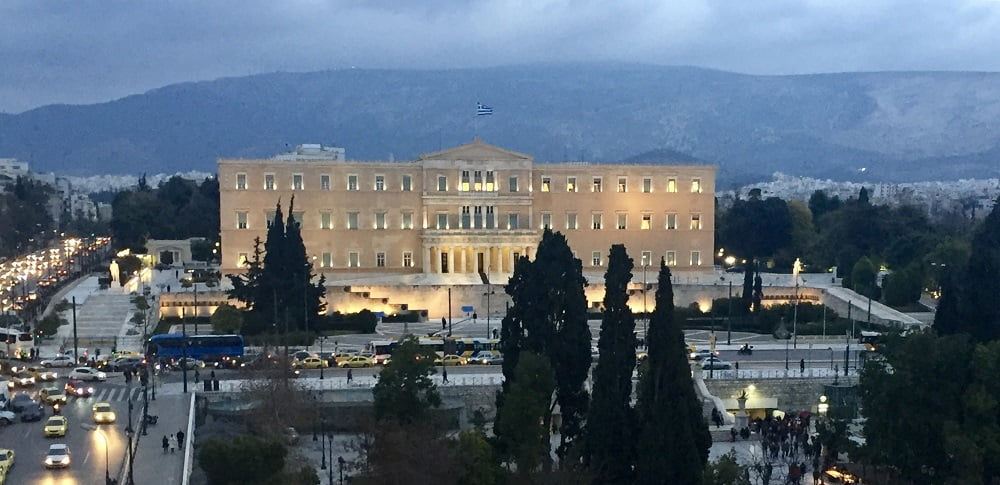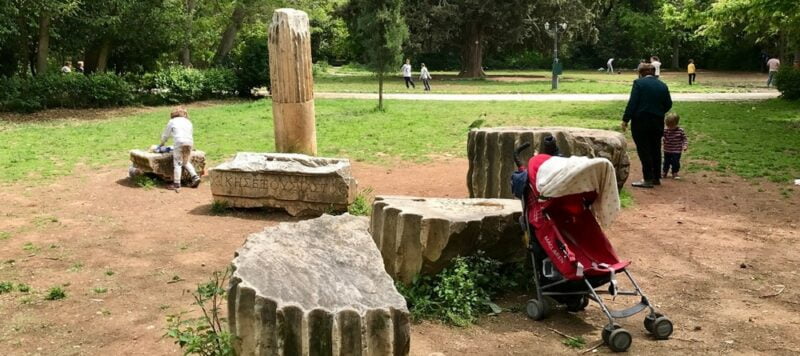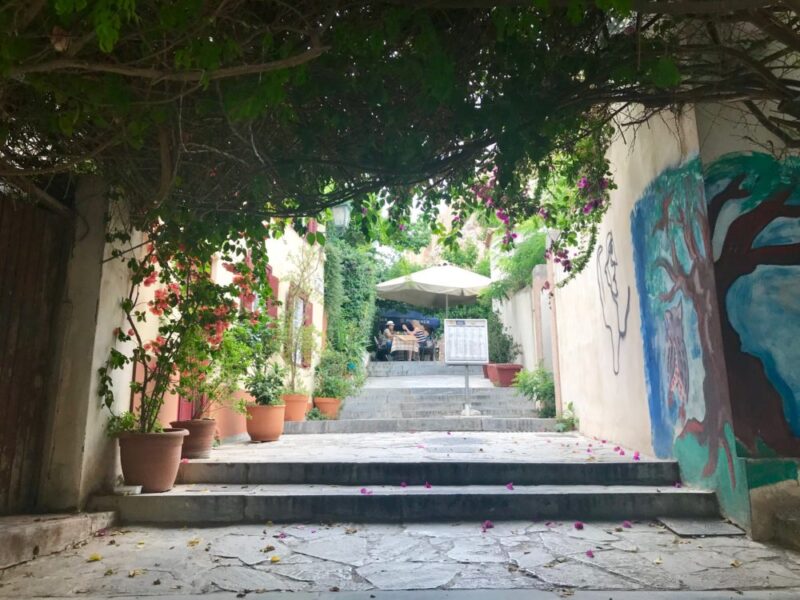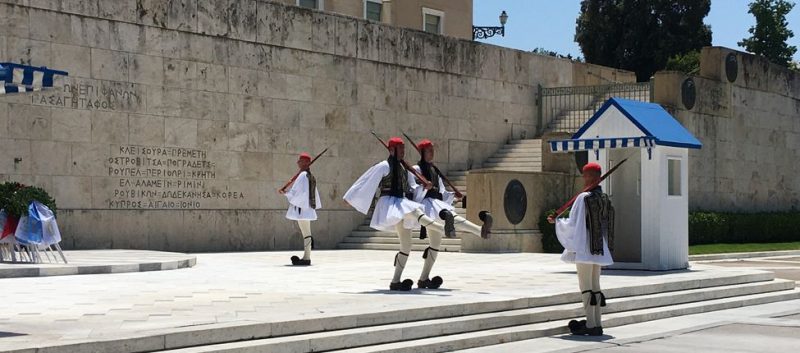Syntagma Square is one of the most emblematic squares of Athens. It is at the heart of the city: a passageway for tourists, the center of political and social life, a meeting place for Athenians and the seat of popular events.
The square takes its name from the constitution (syntagma in Greek) that King Otto was forced to grant in 1843 following a popular and military uprising.
A small museum in the Syntagma metro station
Syntagma Square can be reached on foot from most tourist sites, especially from the neighborhoods of Plaka and the Acropolis.
You can also get there by metro. Indeed, hub of Athenian transportation, Syntagma is served by lines 2 and 3. The tramway connecting the center to the southern suburbs and the seaside also stops here and allows you to reach the beaches of the Athenian Riviera in 40 mins.
Inside the metro station, take a look at the various showcases where antiquities found during the construction of the metro system are permanently displayed: aqueducts, marble columns, amphoras. There is also an entire wall that houses tombstones. One of them contains a skeleton (visible) dating from the 4th century BC.
Syntagma Square: a central place
If you arrive by metro, take the “Syntagma Square” exit. It leads to the vast square in the center of which springs a marble fountain. Benches on the side of the building allow you to observe the constant coming and going. At any time of the day, the square is buzzing with activity.
You will hear the lottery ticket sellers offering you to win the ” tzak pot “, i.e. the “jackpot” (the letter “J” does not exist in the Greek alphabet). Look for the little yellow cart at the exit of the metro. It overflows with koulouris the ultimate Greek snack (50 centimes/piece), these bread rings sprinkled with sesame seeds.
In the axis of the fountain, to the west of the square, Ermou Street starts. This pedestrian and commercial artery connects Syntagma to Monastiraki Square. To the north, there are three large hotels: the Athens Plaza, the King George and the Great Britain Hotel, the most prestigious in Athens. To the east: the Parliament and the National Garden.
Syntagma Square is a central and lively place. There are many cafes in the area where you can stop and shop for souvenirs.
Syntagma is also the departure point for the multi-stop tourist buses. A good alternative to discover Athens and reach the Acropolis or the archaeological museum which is out of the way from the other sites.
Finally, practical information: at the corner of Syntagma Square and Mitropoleos Street you will find a large post office. It is open Monday to Friday from 7:30 am to 8:30 pm, Saturday from 7:30 am to 2:30 pm and Sunday from 9 am to 1:30 pm.
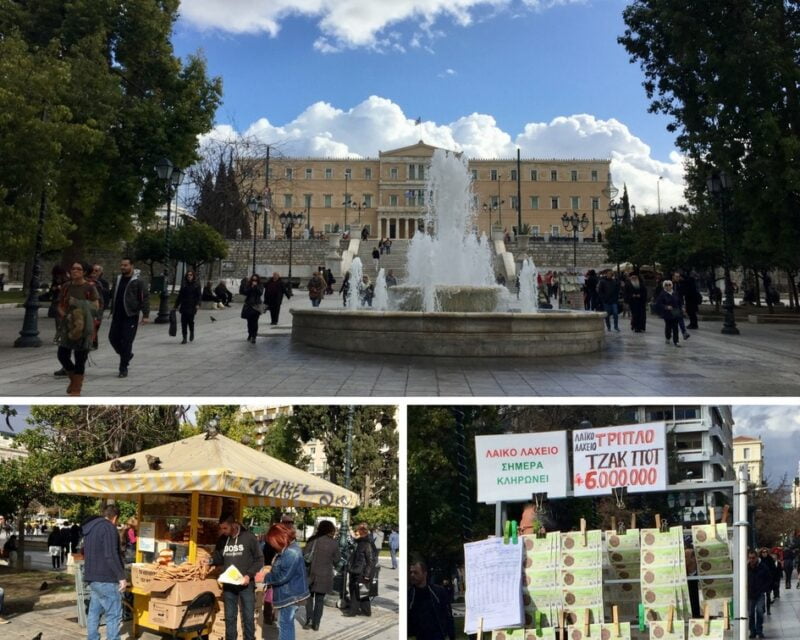
On Syntagma Square: the Parliament
The main monument of Syntagma Square is the former Royal Palace. It was built for the first king of Greece, Otto, and his wife Amalia. Since 1935, this building has been the seat of Parliament. It is now in this large salmon-colored building on top of which the Greek flag flies that important political decisions are made. Therefore, Syntagma Square represents the seat of power. It is, therefore, the epicenter of political demonstrations and rallies.
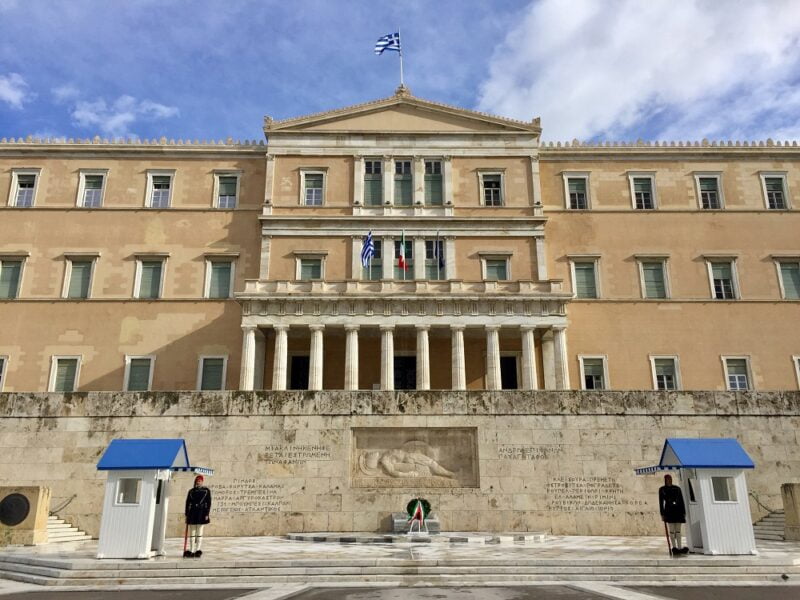
The changing of the guard: a choreographed routine
At the bottom of the Parliament is the tomb of the Unknown Soldier, guarded by the Evzones. These are soldiers whose uniforms consist of a 400 pleat skirt and shoes with tassels.
The changing of the guard, a slow and rhythmic procession, usually attracts many tourists. It takes place every hour, day and night, on the hour. And, on Sunday, at 11 o’clock, a larger platoon goes down Vassilis Sofias Avenue to the sound of a brass band. Don’t miss this intriguing choreography.
A tip: go there also in the evening, after a dinner in Plaka. Indeed, there are far fewer tourists than during the day and the night atmosphere gives this synchronized ballet a somewhat surreal aspect.
Laure M.
Updated April 18, 2024
